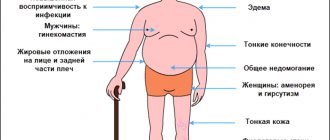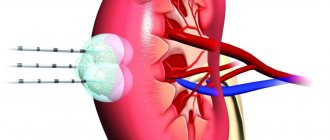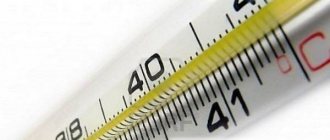Mouse fever - how can you get infected?
Few of us adore mice, which live in their holes and come out from there in search of their food, when everything around is calm and there are no people nearby. Having found food for their food, they not only spoil and gnaw it, they thereby spread the causative agent of a dangerous disease.
Mouse fever is an acute viral disease caused by voles, house mice, and Norway rats. Rodents themselves do not get sick, but they can transmit the pathogen to inheritance. The virus is released into the external environment through the excrement of rodents. Given the recent increase in the population of mouse-like rodents, the possibility of contracting mouse fever is increasing.
Among the routes of infection, doctors identify the following:
Airborne dust route - when inhaling dust containing viruses in dried rodent excrement.
The nutritional route is when consuming food or water that is contaminated with secretions containing viruses.
Contact route - through direct contact of damaged human skin with objects contaminated with excrement containing viruses, or through direct contact with infected rodents.
Very often, infection occurs when sweeping the floor in forest lodges, when cleaning basements and sheds, or when eating contaminated water or food.
A sick person is not dangerous to others, as the disease is not transmitted from person to person.
TREATMENT
In humans, symptoms of the disease are treated in a hospital setting under the constant supervision of an infectious disease specialist. The patient must observe strict bed rest and adhere to a special diet with plenty of vitamins.
Drug treatment:
- Isotonic solutions.
- Antihistamines.
- Antipyretics.
- Analgesics.
In severe cases, namely in cases of pronounced renal failure, sometimes in the case of severe infectious-toxic shocks, the treatment process is transferred to the intensive care unit. The patient is prescribed a large amount of glucocorticoids, hemodialysis and blood transfusion.
Symptoms of mouse fever
The incubation period – the period from the moment of infection to the appearance of the first signs lasts from a week to a month and a half.
During this period, patients do not even suspect about the disease. After about 2-3 weeks, the first signs of the disease appear, the disease enters the initial period, which lasts 1-3 days.
The disease in adults is characterized by an acute onset: the temperature rises sharply to 40º, fever is accompanied by chills. Severe headaches, pain in the eyes and photophobia, blurred vision (blurry objects and a grid before the eyes), hemorrhages in the sclera of the eyes, and nosebleeds occur. Patients complain of muscle and joint pain, general weakness and dry mouth, nausea and vomiting. On examination, redness of the skin of the upper half of the body and the appearance of a hemorrhagic rash in the area of the sides of the body and armpits are observed. Blood pressure decreases and pulse slows.
In children, the clinical picture of the disease is not much different from adults; the initial period of the disease is more prolonged, the symptoms develop gradually and can be noticed 2-3 weeks after infection.
3-4 days after the onset of the first symptoms, the oliguric stage develops, which is characterized by the appearance of renal symptoms and hemorrhagic manifestations against a background of persistent high temperature. However, after 4-7 days from the onset of the disease, the temperature begins to decrease. The main symptom of this period is the appearance of severe pain in the lumbar region and abdomen. Vomiting, skin hyperemia and hemorrhagic rashes still persist. Puffiness of the face, pastiness of the eyelids are observed, and a sharp reduction in urine output is noted, up to its complete cessation - anuria.
During this period, any even minor injury (tapping on the lower back or even jumping) can lead to such a serious complication - kidney rupture, acute renal failure and death.
After 1.5 - 2 weeks, the patient’s condition improves, vomiting disappears, pain in the kidney area decreases and then completely disappears, the amount of urine excreted increases and even exceeds the daily norm. But general weakness still remains.
With timely and adequate treatment, the patient’s condition normalizes, the symptoms gradually disappear.
What is hemorrhagic fever with renal syndrome?
The pathology is caused by a virus that, penetrating the body, accumulates in the endothelium (inner layer) of blood vessels and in the epithelium of internal organs (kidneys, myocardium, pancreas, liver). The virus then spreads through the blood throughout the body, provoking the onset of the disease, which is manifested by symptoms of general intoxication. The virus damages vascular walls, disrupts blood clotting, causing the development of hemorrhagic syndrome. Blood clots form in various organs, and in severe cases, extensive hemorrhages occur. The kidneys are the most damaged by the virus toxins.
On the territory of Russia, residents of Siberia, the Far East, Kazakhstan, Transbaikalia are susceptible to the disease, therefore the name of this viral infection is tied to the area - Far Eastern, Omsk, Korean, Ural, Tula hemorrhagic fever, etc. The disease is also widespread in the world; residents of Scandinavian countries (Norway, Finland), Europe (France, Czech Republic, Bulgaria), China, North and South Korea. Synonyms for the name of the pathology are hemorrhagic or epidemic nephrosonephritis, Churilov's disease, mouse fever.
Every year, from 5 to 20 thousand cases of the disease are registered in our country. Mostly men of active age are affected - from 16 to 50 years (70–90%). Hemorrhagic nephrosonephritis is mainly sporadic, that is, isolated cases are recorded, but small outbreaks also occur - 10–20, less often up to 100 people.
The highest incidence is observed in the summer and until mid-autumn; in winter, pathology is rarely diagnosed. This happens because the carriers of the virus are rodents - field mice and bank voles, which are active in the warm season. In urban environments, house rats can be carriers of infection.
Hemorrhagic fever with renal syndrome is often called mouse fever because mice are the carriers of the infection.
Until the age of three, hemorrhagic fever with renal syndrome is practically not registered; until the age of seven, children get sick extremely rarely. This is due to the fact that children have little contact with wildlife and do not take part in agricultural work. Children can only get sick if their parents violate hygiene standards (for example, they fed the child unwashed vegetables contaminated with the feces of a mouse carrier). Small outbreaks of the disease are possible among children in pioneer camps, sanatoriums, and kindergartens if the institutions are located near a forest or field.
In young children, especially newborns and infants, the disease is very severe, since the virus affects the blood vessels, and in children they are characterized by increased permeability. Babies, as a rule, develop multiple bleeding into internal organs, disrupting the functioning of entire systems.
Hemorrhagic nephrosonephritis always occurs acutely; there is no chronic course. After the disease, lifelong immunity remains.
The doctor talks about the infection in detail - video
Treatment and diagnosis of mouse fever
For experienced doctors, it will not be difficult to diagnose this infection. And although the onset of the disease is similar to ARVI, unlike the latter, such patients do not experience catarrhal symptoms and cough.
But you will be alerted to a sharp increase in temperature of unknown origin, hemorrhages in the skin, sclera of the eyes, bleeding gums, the appearance of pain in the kidney area and other symptoms.
The most important evidence of this disease is the collection of epidemiological history. Only after learning that there has been contact (direct or indirect) with mice and being in an endemic focus can the diagnosis of mouse fever be confirmed. In addition, the diagnosis of the disease must be confirmed by a laboratory blood test.
Treatment of the disease must necessarily take place in an infectious diseases or therapeutic hospital with strict bed rest. There is no question of any folk remedies or treatment at home - the disease is too serious and there are possible complications from it.
Reasons for the development of complications
The main reason for the development of consequences is the lack of timely diagnosis and treatment. Complications arise in the case of advanced forms of HFRS. Without treatment, serious consequences always develop. The virus can infect almost any organ. In addition, the likelihood of death is high. Depending on the type of HFRS, the risk may be as follows:
- 20% in case of eastern type of fever. Its carrier is the field mouse. This type of HFRS has a more severe course.
- 2% in case of Western type fever. You can get infected from the bank vole. HFRS type 2 is a milder version of the disease.
Articles on the topic
- Symptoms of mouse fever in men - characteristic manifestations
- Symptoms of meningitis in adults - how to recognize the infection in the early stages
- Fungal diseases in humans
Mouse fever - consequences after illness
If treatment is started in a timely manner, no complications arise, but a late visit to the doctor and started treatment can lead to the following complications:
- kidney rupture,
- impaired renal excretory function,
- eclampsia - a convulsive state of fainting,
- pulmonary edema,
- the appearance of localized foci of pneumonia,
- vascular insufficiency and blood clot formation.
Mouse fever does not cause any special health consequences - it goes away without a trace. But the danger of the disease lies in late diagnosis and initiation of treatment, when time has already been lost and kidney damage and liver destruction have begun. This not only leads to very serious illnesses, but often ends in death. This is where all the possible danger lies.
Having had mouse fever and even recovered, the patient must strictly adhere to the regimen and diet for another year.
During the period of treatment and recovery, it is necessary to avoid salty, smoked, spicy foods and alcohol. Food should be fresh and lean with low salt content. This is necessary for normal restoration of kidney function.
Diagnostics
When collecting an epidemiological history, be sure to take into account the patient’s stay in an area where there were cases of hemorrhagic nephrosonephritis, possible contact with rodents or objects contaminated with waste products of these animals. Clinical diagnosis is based on the cyclical course of the disease, the characteristic changes in symptoms in successive periods, as well as laboratory data.
General and biochemical blood and urine tests, a coagulogram (blood test for clotting) are performed. Analyzes are carried out over time, since the disease is characterized by constant changes in indicators.
In the blood at the initial stage of the disease, leukopenia (decrease in the level of leukocytes), and then sharp leukocytosis (increase in leukocytes), thrombocytopenia (decrease in the number of platelets), high ESR (up to 40–60 mm per hour) are observed. In the oliguric stage, the amount of residual nitrogen, magnesium and potassium in the blood significantly increases, and the level of chlorides, calcium and sodium decreases. Hemoglobin and red blood cells increase due to blood thickening due to the leakage of plasma through the walls of blood vessels damaged by the virus. A coagulogram shows a decrease in blood clotting ability. Blood biochemistry determines changes in basic indicators, which indicates a deep disruption of metabolic processes in the patient’s body.
A urine test determines red blood cells, protein, and casts. Albuminuria (high protein in the urine) appears a few days after the onset of the disease and reaches its highest levels around the 10th day, and then declines sharply. Such a sharp change in protein levels (even within a few hours) is characteristic of mouse fever and does not occur with any other disease.
Gross hematuria, albuminuria and rapid changes in laboratory parameters are characteristic signs of hemorrhagic fever with renal syndrome
Hypoisosthenuria (low specific gravity of urine) is observed from the very beginning of the disease, significantly increases during the oliguric stage and does not recover for a long time. This symptom, along with albuminuria, has valuable diagnostic value.
Specific diagnostics consists of detecting antibodies to the pathogen in the blood serum using serological methods - ELISA (enzyme-linked immunosorbent assay) or RNIF (indirect immunofluorescence reaction). Blood is taken for testing as early as possible during the illness and again after 5–7 days. Repeated analysis reveals an increase in antibody titers by at least 4 times. Antibodies remain in the blood of survivors for many years (5–7).
To assess the severity of kidney damage, ultrasound is used, the patient is given an ECG, chest X-ray, and fibrogastroscopy as indicated.
Differential diagnosis
The disease should be distinguished from pathologies with similar symptoms: other types of hemorrhagic fevers, leptospirosis, enterovirus infection, typhus, sepsis, kidney diseases - acute pyelonephritis, glomerulonephritis, nephrosis.
How to avoid getting mouse fever
Measures to prevent the disease are elementary, which are already clear from how one becomes infected with mouse fever. This means:
- Destroy rodents wherever they may be adjacent to you.
- When putting things in order in forest houses, basements, attics, and utility rooms, use face masks and bandages; try to clean only with a wet method.
- Store food out of reach of mice.
- Do not eat food that has been spoiled by rodents.
- Do not drink water from unknown sources.
- And wash your hands, especially when cleaning rooms where there were traces of rodents.











